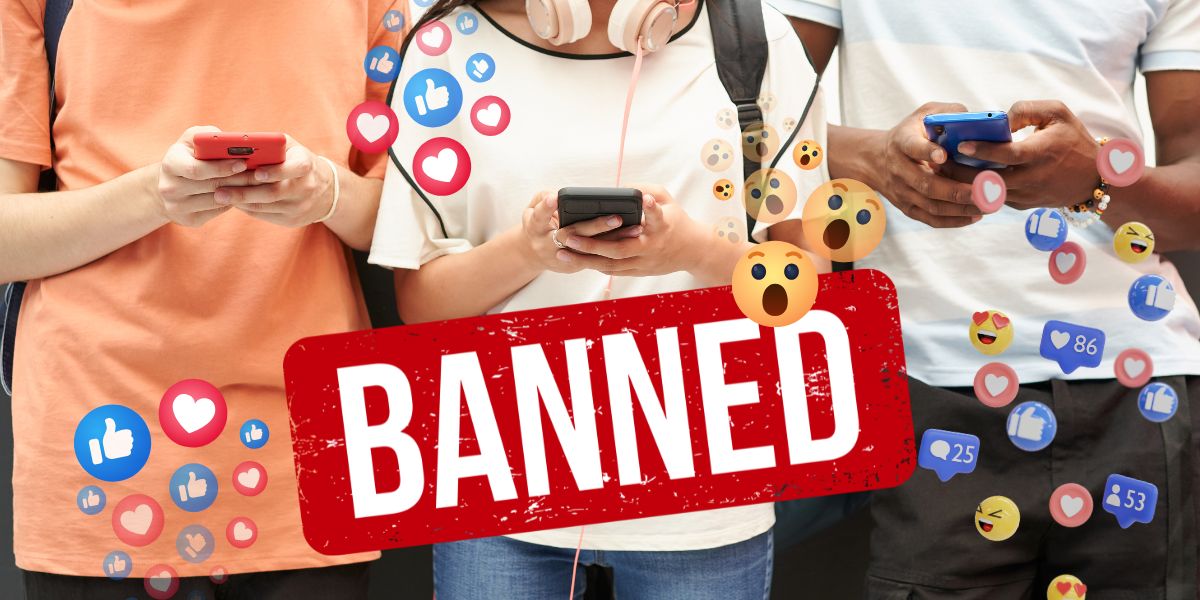Australia is preparing to implement a world-first social media law that shifts the burden of child safety from parents to the global tech platforms. This landmark change, which takes effect on 10 December 2025, aims to give young Australians crucial developmental years away from the pressures of addictive and at times toxic social media feeds.
For the average Australian family, the new law introduces strict boundaries, significant confusion, and powerful penalties for the tech giants.
1. The Core Rule: A Hard Age Limit of 16
The central pillar of the law is establishing a mandatory minimum age of 16 years for holding an account on services defined as an “Age-Restricted Social Media Platform.”
- Who is Banned? Australians under 16 years old will be unable to create or maintain an account on platforms like Facebook, Instagram, TikTok, X (formerly Twitter), Reddit, and, surprisingly, YouTube. More could be added to this list as we get closer to the date.
- Existing Accounts are Affected: This is not just for new users. If your 14-year-old already has a TikTok account on 10 December 2025, the platform is legally obligated to take “reasonable steps” to deactivate or remove that account.
- No Parental Consent: This is a hard age ban. Parents cannot sign a waiver or give consent for their child to use these platforms before they turn 16.
2. The Responsibility and the $49.5 Million Fine
The law’s most significant impact is placing the entire legal onus on the corporations, not on the children or their parents.
- The Platforms are Liable: There are no fines or penalties for children or their parents if a child manages to bypass the system. The government’s focus is on penalising corporate failure.
- The Financial Stick: Social media companies face civil penalties of up to A$49.5 million for a “systemic breach” of the requirement to keep under-16s off their platforms.
- What is a Systemic Failure? This fine targets a fundamental failure of design. For instance, if a company relies only on a simple “I am over 16” clickbox, or if it ignores warnings that thousands of underage Australian accounts are still active, it would be deemed a systemic failure and risk the maximum fine.
3. How Age Verification Must Work (The Privacy Shield)
To comply with the “reasonable steps” standard, platforms must balance safety with user privacy, leading to complex technical solutions:
- No Mandatory Government ID: The law explicitly prohibits companies from demanding government-issued identification (like a passport or driver’s license) as the sole method for age verification. They must offer reasonable alternatives.
- The Layered Approach: Platforms are expected to use a “layered” or “waterfall” system, combining various privacy-preserving tools, such as:
- Age Estimation: Using AI to estimate age based on a photo or selfie.
- Age Inference: Using behavioural data, such as the age of the account or posting patterns, to determine confidence in the declared age.
- Data Destruction: Crucially, any sensitive personal information collected solely for the age check (like a facial scan or an ID photo) must be destroyed immediately after the user’s age is confirmed. Misusing or retaining this data is a severe breach, subject to the same massive fine.
4. Exemptions: Why Messaging is Safe
The government was careful not to eliminate all digital communication for young people. The law targets platforms whose “sole or significant purpose” is social interaction and content distribution.
- Messaging Apps are Exempt: Services whose primary purpose is communication are excluded. This means children under 16 can continue to use services like:
- Messenger (the core messaging function, separate from the main Facebook feed)
- Messaging features within online games.
- Health and education services (like Headspace or Google Classroom).
- The Meta Loophole is Covered: Since the Facebook social platform is banned, Meta must technically decouple the services, ensuring that a child whose Facebook account is deactivated can still access the exempted Messenger chat function via a restricted or parent-controlled account. Meta had already shifted to a more universal login a could of years ago so that you could access their mulitple plaforms without needed a “Facebook” account, to help with purchases of the Meta Quest VR systems etc.
5. What Should the Average Aussie Expect?
The law creates a new landscape that will affect both teens and adults:
- For Under-16s: Expect accounts on major social feeds to be subject to mandatory age checks and potential deactivation by the December 2025 deadline.
- For Adults: You may be asked to undergo an age check yourself to help the platform ensure your identity is not being used by a minor. The check must be conducted in a privacy-respecting manner.
- For Parents: The law gives parents strong legal backing to delay social media access, but it does not eliminate the need for digital literacy. Experts warn that some children will attempt to bypass the rules using VPNs or fake identities, requiring ongoing parental guidance.









